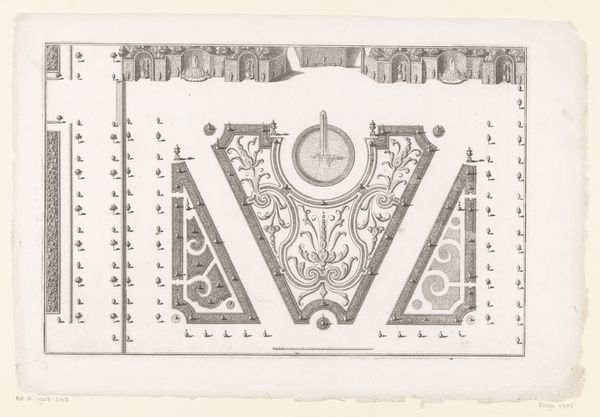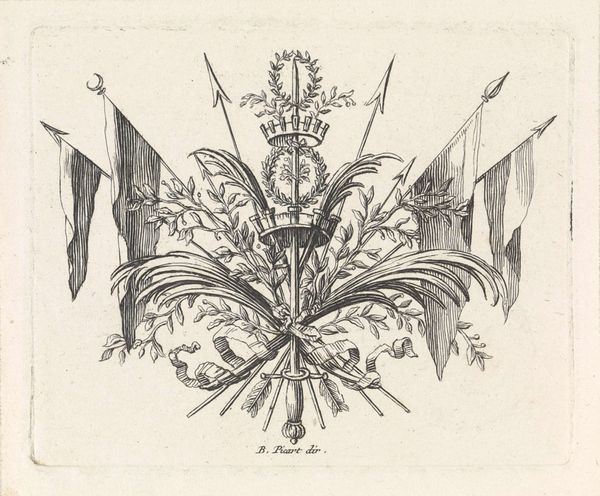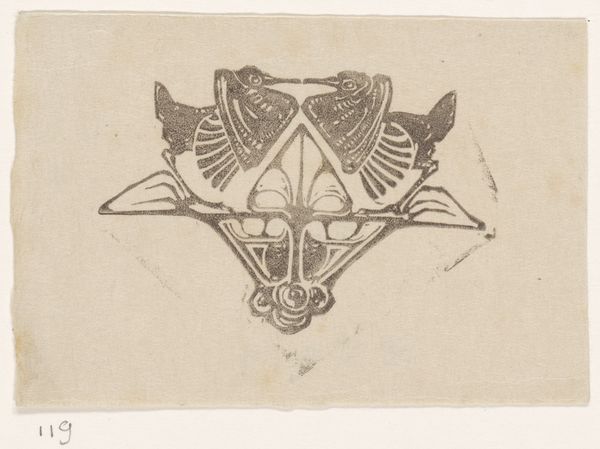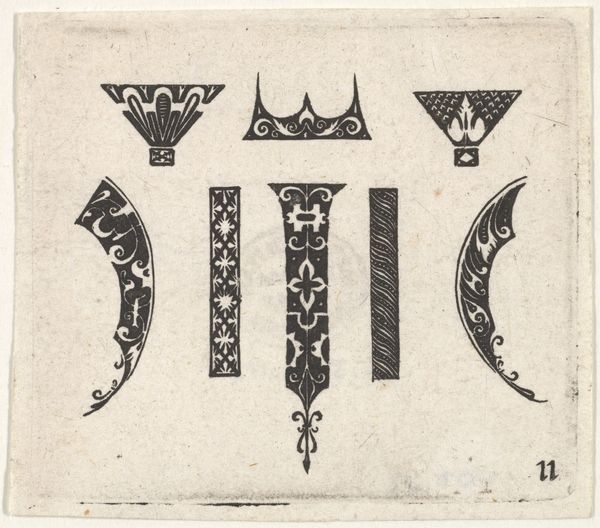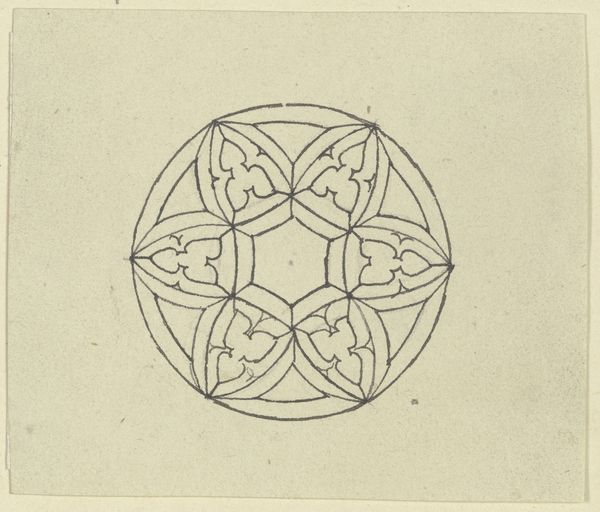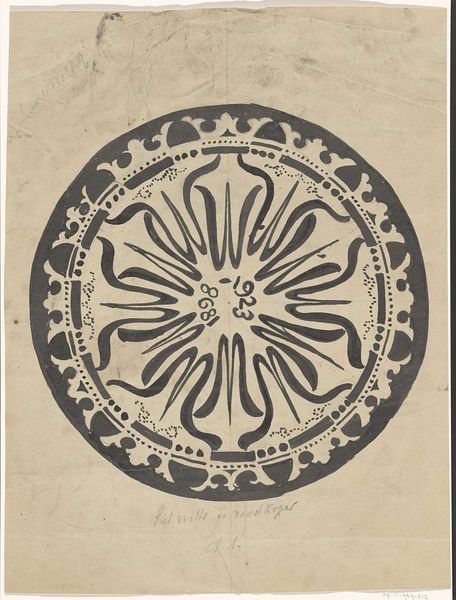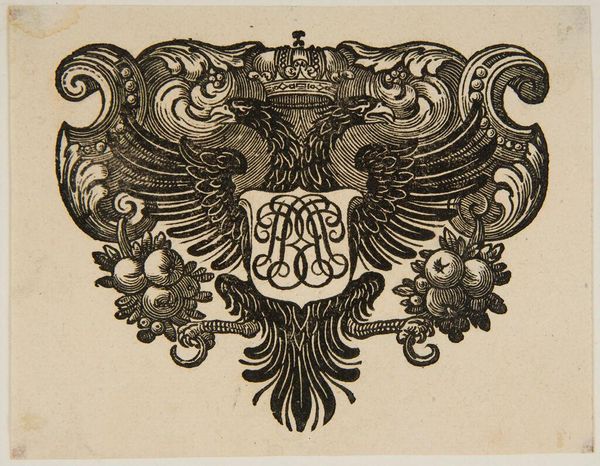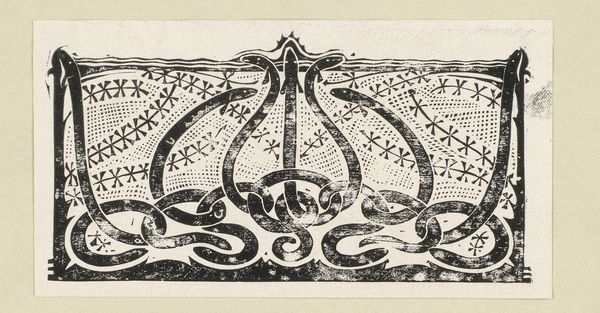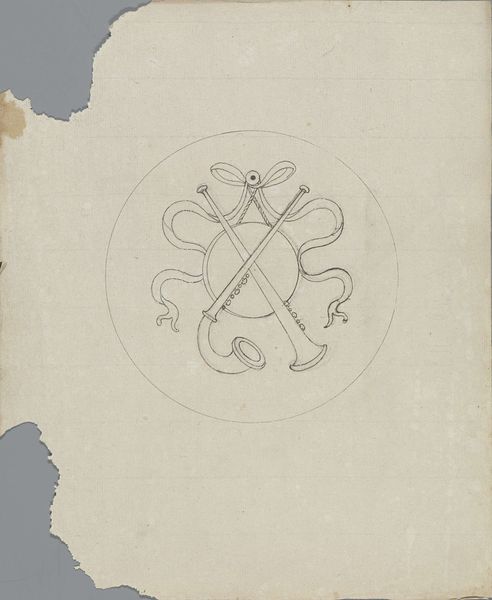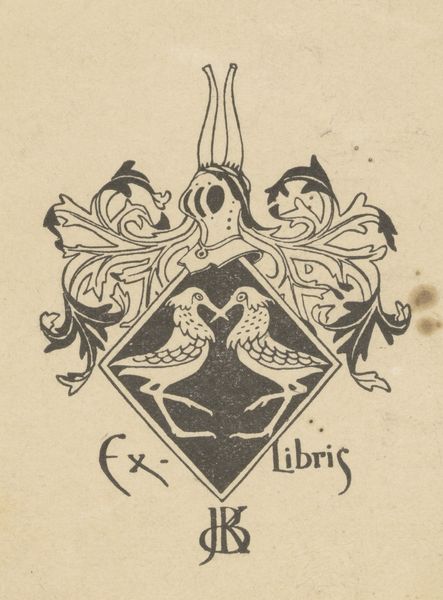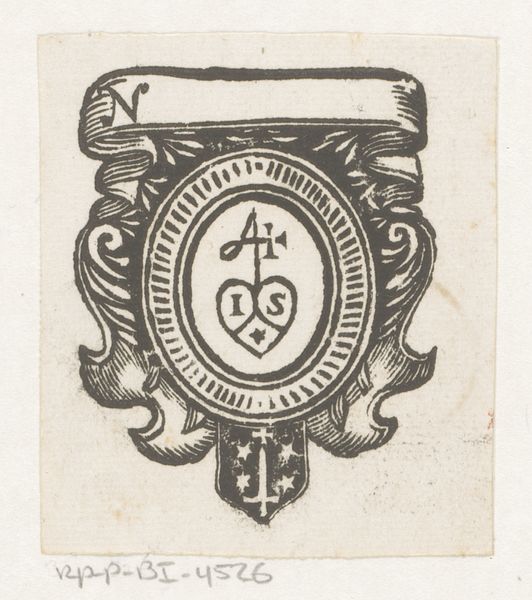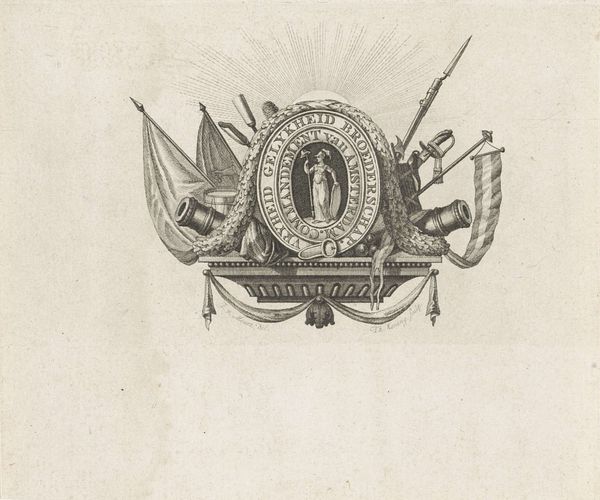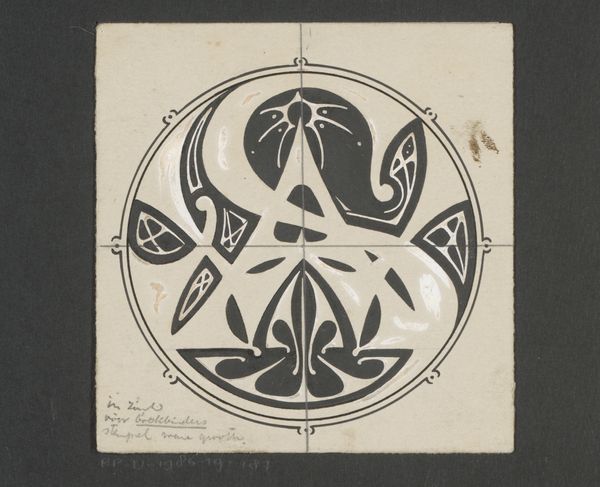
graphic-art, print, embossing, woodcut
#
graphic-art
#
art-nouveau
# print
#
embossing
#
geometric
#
woodcut
#
symbolism
#
decorative-art
Dimensions: height 105 mm, width 133 mm
Copyright: Rijks Museum: Open Domain
Curator: Our next piece is a woodcut with embossing by Mathieu Lauweriks, a print entitled "Vignet 'Alfa U Omega.'" Lauweriks worked on this between 1897 and 1935. Editor: It’s immediately striking. The geometry feels very assertive and somehow still very old-fashioned and mysterious. There is something both comforting and alien about such visual formality. Curator: Indeed, the piece embodies both Art Nouveau and Symbolist styles, each having considerable overlap in the late 19th and early 20th centuries. Lauweriks embraced geometric systems that referenced ideas developed within the Theosophical Society. The straight lines, circles, and symmetry convey a sense of order. Editor: Yes, you feel that in the symbols themselves: the Alpha and Omega, the first and last letters of the Greek alphabet. Enclosed within a circle that’s guarded by those radiating wings. This arrangement suggests the all-encompassing nature of creation and the eternal. It certainly evokes notions of beginnings, ends, and everything in between. Curator: Right, but it’s worth noting that, at the time, this was considered very avant-garde. In a cultural landscape where artistic expression was tied to the ideals of progress, Lauweriks helped pioneer a vision tied to the aesthetics of the decorative arts, as much as it had spiritual significance. These movements influenced architecture, design, and even urban planning, democratizing spiritual concepts through everyday life. Editor: The geometric construction speaks directly to a deeply felt sense of universal order, while its stylized, decorative elements soften what could easily be an austere statement. The piece creates a memorable impact, as though presenting a grand, self-contained idea. Curator: I agree. I find the fact that he created this emblem over such a long span so revealing. It mirrors the period of tumultuous social change across Europe as various theosophical societies were growing. Editor: It is incredible how the universal remains anchored in a particular time and place.
Comments
No comments
Be the first to comment and join the conversation on the ultimate creative platform.

